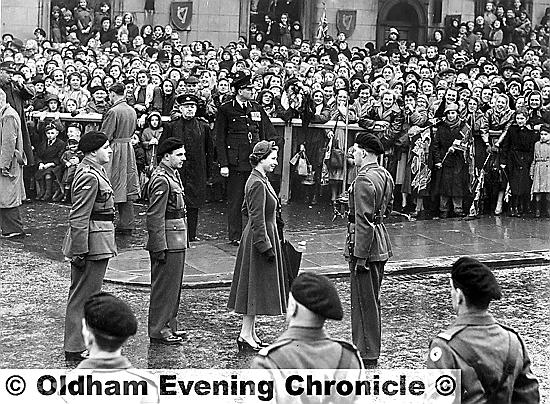Long to rain over us!
Date published: 09 September 2015
The Queen rewrites history today as she becomes the longest-reigning British monarch at around 5.30pm — a record set by her great-great-grandmother Queen Victoria who, Buckingham Palace has calculated, reigned for 23,226 days, 16 hours and 23 minutes.
Queen Victoria became the figurehead of a vast empire amid great industrial, cultural and scientific changes to society. But she mourned the early death of her consort Prince Albert in 1861 for the rest of her life.
Princess Elizabeth became Queen Elizabeth II when she was 25, on the death of her father King George VI, on February 6, 1952. Like Victoria, she has acted as a figure of continuity as the country has modernised.
She has served, with Philip at her side as we have witnessed technological advances and a succession of British governments of different political persuasions.
The Queen has become accustomed to countless milestones during her decades on the throne. In December 2007, she became the longest living British monarch, overtaking Victoria who died when she was 81. In May 2011, she became the second-longest reigning monarch in British history, when she overtook George III.
The Queen is also the first British monarch to have sent an email, to have a message put on the moon, to have conducted a royal “walkabout” and to have held a public concert in her back garden.
She is the second-longest serving monarch in the world after King Bhumibol Adulyadej of Thailand, who took to the throne in 1946 but who is now rarely seen in public.
The record of length of time on the throne can be calculated in different ways, but the Palace considers the total number of days plus hours and minutes to be the most accurate.
The Queen actually passes Victoria’s record at around 5.30pm when she will have reigned for 23,226 days 16 hours and approximately 30 minutes — but the exact moment she became Queen is hard to calculate as George VI died in his sleep in the early hours of the morning, possibly at around 1am.
THE Queen has paid two visits to Oldham during her record-brweaking years on the throne - first in 1954, then in 1992.
On October 22, 1954, the Queen and the Duke of Edinburgh visited Oldham Town Hall and textile mills in Shaw as part of a two-day tour of Lancashire.
Fireworks heralded her arrival in the borough and thousands lined the streets along the route from Manchester. Surrounding streets were shut and there was a heavy police presence to protect the royal party.
Rain poured for the majority of the visit but it didn’t deter the crowds who waved Union Jacks as the royal car passed by.
The Queen was wearing a kingfisher blue coat with matching hat and black leather shoes with a matching handbag.
At Lilac Mill, she spoke to every operative and even apologised for interrupting the birthday celebrations of two-year-old Maria Semianczuk!
On July 17, 1992, Queen Elizabeth enjoyed a party at Alexandra Park with 3,000 guests as she came to Oldham after officially opening the Metrolink network in Bury.
Oldham Council workers spent the months before her arrival improving the park, laying a new promenade, improving the drainage system and felling the biggest trees. Eleven-year-old Shabana Sadiq was chosen to present the Queen with a special posy.
COUNCILLORS will pay tribute to the Queen with a special motion at tonight’s meeting.
Liberal Democrat Councillor Derek Heffernan will propose that chief executive Carolyn Wilkins writes to Buckingham Palace to congratulate the Queen.
He said: “Our Queen is, without doubt, a role model for our country; a rock on which our nation is built. When she came to the throne she promised to serve this nation and the Commonwealth. She has fulfilled that promise and despite being 89 years of age, she still faithfully fulfils a very heavy diary of Royal commitments.
“Her reign has been momentous in many ways. An Empire has gone, officially ending with the transfer to China of Hong Kong in 1997, and a Commonwealth has taken its place.
“Science and technology have surged ahead; our nation is now more diverse than we could have imagined in 1952.”
Most Viewed News Stories
- 1Milan Bar in Lees and The Bank at Delph close doors with immediate effect
- 2Latics announce retained list
- 3Punch perfect Kyle is Oldham's latest national boxing champ
- 4Second-hand music, books and media shop opens in Mossley
- 5Attack on shop worker filmed and posted on Snapchat results in jail sentence for Oldham man





